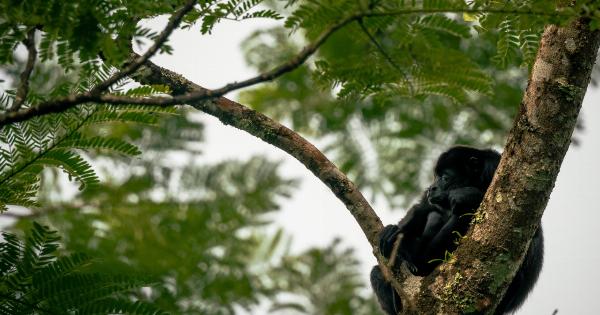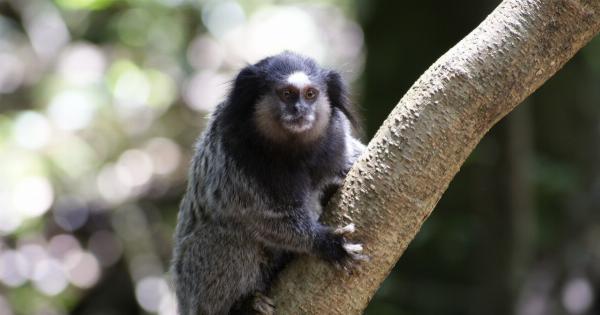Amidst the ongoing battle against the COVID-19 pandemic, a new virus has emerged in China, leading to concerns and alarm among health authorities and the general public.
The new virus, known as the “Langya” virus, has been confirmed to have infected several individuals in different provinces of China. With the potential for rapid transmission and severe health consequences, experts warn that urgent measures are needed to prevent a major outbreak.
The Origins and Characteristics of the Langya Virus
The Langya virus is a novel zoonotic virus, meaning it is transmitted from animals to humans. It belongs to the coronavirus family, similar to the SARS-CoV-2 virus responsible for the ongoing COVID-19 pandemic.
The origin of the Langya virus is yet to be determined, but researchers speculate that it might have emerged from wildlife, specifically bats or other mammals.
Initial studies suggest that the Langya virus shares genetic similarities with other known coronaviruses, including SARS-CoV-2 and the Middle East Respiratory Syndrome Coronavirus (MERS-CoV).
This genetic similarity raises concerns about its potential for human-to-human transmission and its ability to cause severe respiratory illnesses.
Outbreak and Spread of the Langya Virus
The first cases of the Langya virus were reported in the city of Langya, located in the eastern coastal province of China.
However, since then, cases have been identified in various other provinces, indicating the spread of the virus beyond its initial epicenter.
Local health authorities have launched aggressive testing and contact tracing measures to identify and isolate individuals who may have come into contact with infected individuals.
Preliminary investigations suggest that the virus may be spreading through respiratory droplets, similar to other coronaviruses. As a result, strict measures, including mask-wearing, social distancing, and hand hygiene, have been urged to contain the spread of the virus.
Experts have expressed concerns that the Langya virus has the potential to become a global health threat if not effectively contained.
Its close genetic relationship with the SARS-CoV-2 virus raises fears of similar modes of transmission and severe respiratory illnesses. The rapid spread of the virus to multiple provinces within a short period has further intensified the need for immediate action.
The Global Response to the Langya Virus
As news of the Langya virus spread, several countries implemented travel restrictions and enhanced screening measures for individuals arriving from China. The aim is to prevent the introduction and spread of the virus in other regions.
International health organizations, including the World Health Organization (WHO), are closely monitoring the situation and providing guidance and support to affected countries.
Researchers and scientists worldwide are collaborating to understand the Langya virus better.
Genetic sequencing and analysis are underway to identify the virus’s origins, transmission patterns, and potential strategies for treatment and prevention. This global effort is crucial in mitigating the impact of the virus and preventing a wider outbreak.
Lessons Learned from Previous Pandemics
The occurrence of yet another novel virus reminds us of the lessons learned from previous pandemics, such as SARS and MERS. These outbreaks highlighted the importance of early detection, prompt response, and international collaboration.
The Langya virus serves as a reminder that vigilance and preparedness are key in preventing and containing emerging infectious diseases.
Investment in research, surveillance systems, and healthcare infrastructure are crucial to strengthen our ability to respond swiftly to new threats.
By learning from past experiences, we can enhance our capacity to detect and manage emerging viruses, ultimately saving lives and reducing the socio-economic impact of pandemics.
Public Health Measures and Precautions
Given the potential for the Langya virus to spread rapidly, public health authorities have issued several precautions to minimize the risk of infection. These include:.
1. Regular Handwashing
Thoroughly washing hands with soap and water for at least 20 seconds is essential to reduce the transmission of the virus. Hand sanitizers with at least 60% alcohol content can also be used when soap and water are not readily available.
2. Wearing Masks
Masks, particularly those that cover both the nose and mouth, are highly effective in preventing the spread of respiratory droplets, which may contain the Langya virus.
3. Social Distancing
Maintaining a distance of at least 1 meter (3 feet) from others and avoiding crowded places can significantly reduce the risk of coming into contact with the virus.
4. Vaccination
Although there is no specific vaccine available for the Langya virus at present, staying up to date with routine vaccinations, including the COVID-19 vaccine, can boost overall immunity and reduce the severity of infections.
5. Seeking Medical Care
If experiencing symptoms such as fever, cough, or difficulty breathing, individuals should seek medical attention promptly, disclose any recent travel history, and follow the advice of healthcare professionals.
The Path Forward
The emergence of the Langya virus serves as a reminder of the continuous threat posed by zoonotic diseases and the need for sustained investments in public health infrastructure and research.
Ongoing surveillance, collaboration, and information sharing are crucial in preventing and responding to future outbreaks.
As scientists and public health authorities work tirelessly to understand and mitigate the impact of the Langya virus, it is essential for individuals to remain vigilant and prioritize personal and community-level preventive measures.
Through collective effort and global solidarity, we can overcome this emerging health challenge and protect the well-being of populations worldwide.





























